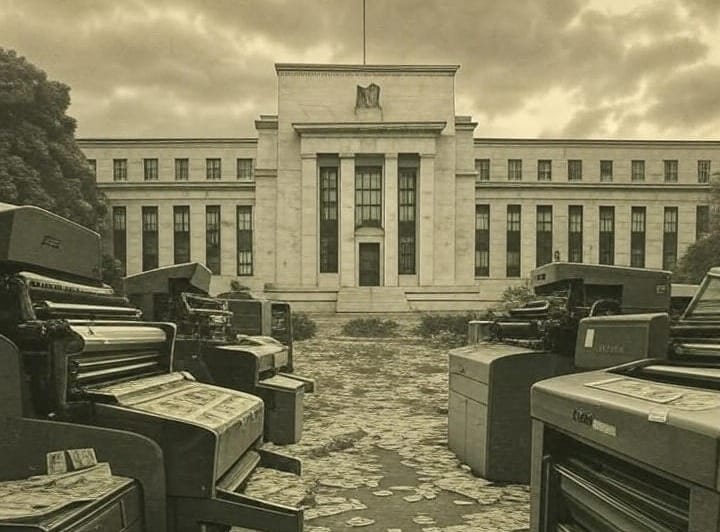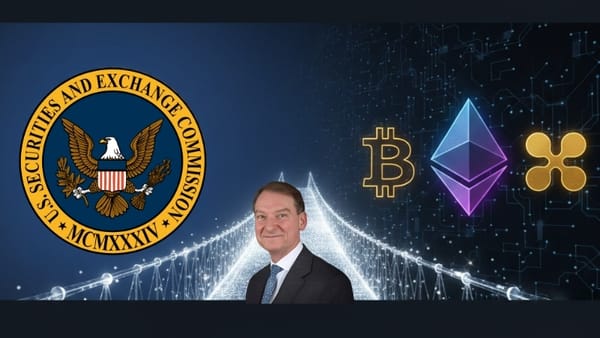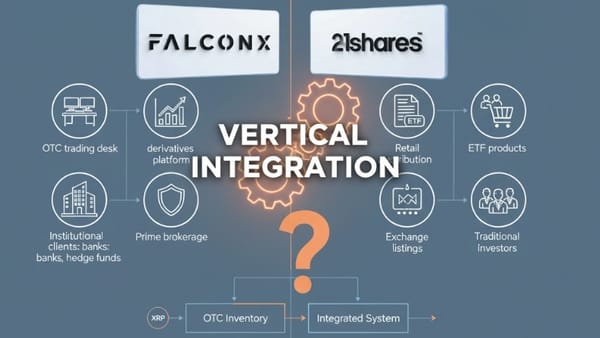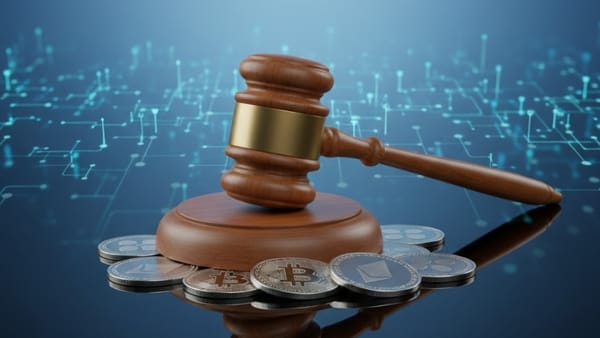The Federal Reserve Part 1: From Secret Creation to Systematic Devaluation
Born in secret on Jekyll Island by banking elites, the Federal Reserve has overseen a 96% dollar devaluation since 1913. The warnings of early critics like Congressman Lindbergh about 'scientifically created depressions' have proven remarkably accurate over 111 years of systematic wealth transfer.

How a century of central banking transformed American money from sound currency to an inflationary instrument.
Since its establishment in 1913, the Federal Reserve has fundamentally transformed the American monetary system. While created to provide economic stability, the dollar has lost over 96% of its purchasing power during the Fed's tenure, raising serious questions about whether the institution has fulfilled its intended mission or simply enriched its creators at the expense of the American people.
The Secret Genesis: Jekyll Island and the Money Trust
The Federal Reserve's creation story reads more like a financial thriller than standard legislative history. In November 1910, six men—Nelson Aldrich, A. Piatt Andrew, Henry Davison, Arthur Shelton, Frank Vanderlip, and Paul Warburg—met at the Jekyll Island Club, off the coast of Georgia, to write a plan to reform the nation's banking system. The meeting and its purpose were closely guarded secrets, and participants did not admit that the meeting occurred until the 1930s.
The executives included Frank A. Vanderlip, president of the National City Bank of New York, associated with the Rockefellers; Henry Davison, senior partner of J.P. Morgan Company; Charles D. Norton, president of the First National Bank of New York; and Col. Edward M. House, who would later become President Woodrow Wilson's closest adviser. These men, representing about one quarter of the world's wealth at the time, traveled under false pretenses—claiming to be on a duck hunting trip.
Forbes magazine founder Bertie Charles Forbes wrote several years later: "Picture a party of the nation's greatest bankers stealing out of New York on a private railroad car under cover of darkness, stealthily hieing hundreds of miles South, then coming together to write a banking bill behind closed doors."
The Economic Theory Behind Central Banking
The Federal Reserve was built on European central banking models, particularly the Bank of England. The crisis of 1907 was the straw that broke the camel's back. It led to the creation of the Federal Reserve in 1913, which was given the mandate of providing a uniform and elastic currency (that is, one which would accommodate the seasonal, cyclical, and secular movements in the economy) and to serve as a lender of last resort.
The theoretical foundation rested on the belief that a centralized authority could better manage the money supply than the fragmented banking system that existed. The absence of a central banking structure in the U.S. previous to this act left a financial essence that was characterized by immobile reserves and inelastic currency. The Jekyll Island conspirators sought to solve what they called the "inelasticity" problem—the inability of the money supply to expand and contract with economic needs.
Prescient Opposition: The Voices of Warning
The Federal Reserve Act faced fierce opposition from lawmakers who accurately predicted its potential for abuse. Representative Charles August Lindbergh of Minnesota was one of the most vocal opponents, warning that the act would hand control of the economy to "a purely profiteering group" operating "for the sole purpose of obtaining the greatest possible profits from the use of other people's money."
On the day the House agreed to the Federal Reserve Act, Lindbergh made a remarkably prescient statement: "This act establishes the most gigantic trust on Earth. When the President signs this act, the invisible government by the money power, proven to exist by the money trust investigation, will be legalized... From now on depressions will be scientifically created."
Another vocal critic was Louis McFadden, Chairman of the House Committee on Banking and Currency, who later said about the crash of 1929: "It was not accidental. It was a carefully contrived occurrence. The international bankers sought to bring about a condition of despair here so that they might emerge as rulers of us all."
The Political Maneuvering
The passage of the Federal Reserve Act itself was controversial. On December 23, 1913, the House of Representatives had passed the Federal Reserve Act, but it was still having difficulty getting it out of the Senate. Most members of Congress had gone home for the holidays, but unfortunately, the Senate had not declared Adjournment Sine Die. There were just three members still present. On a unanimous consent voice vote the 1913 Federal Reserve Act was passed.
This secretive passage mirrored the secretive planning that had occurred three years earlier at Jekyll Island, leading critics to argue that the American people had been deliberately deceived about the true nature and control of their monetary system.
The Prophetic Accuracy of Critics
More than a century later, the warnings of these early critics appear remarkably accurate. The Federal Reserve has indeed witnessed dozens of substantial economic downturns, including the Dot-com crash, the 2008 Financial Crisis, and the COVID-19 economic impact. If you held a fixed amount of dollars since 1913, you'd only be able to buy 3.2% of the stuff today that you could've purchased back then.
The "scientifically created depressions" that Lindbergh warned about seem to have materialized through the Fed's ability to manipulate interest rates and money supply. The Fed creates money when they purchase public (government) or private (corporate) debt, essentially expanding the money supply without corresponding increases in economic output or value creation—precisely the mechanism critics feared would lead to systematic wealth transfer.
The Erosion of Purchasing Power: A Century of Decline
The statistics are stark and undeniable. In 1913, the Federal Reserve Act granted Federal Reserve banks the ability to manage the money supply in order to ensure economic stability. Back then, a dollar could buy 30 Hershey's chocolate bars. Today, that same dollar purchases a fraction of what it once could.
$100 in 1913 would only be worth about $3.87 today, representing a catastrophic loss of value over the Fed's 111-year existence. This dramatic devaluation accelerated particularly after key policy changes, with inflation skyrocketing after President Nixon ended the gold standard in 1971.
The Mechanism of Devaluation
Money supply (M2) in the U.S. has skyrocketed over the last two decades, up from $4.6 trillion in 2000 to $19.5 trillion in 2021. In fact, around 20% of all U.S. dollars in the money supply, $3.4 trillion, were created in 2020 alone. This dramatic expansion of the monetary base directly contributes to the erosion of purchasing power for all dollar holders.
This money printing essentially taxes all holders of US dollars, and uses that taxed value to fund US government contracts, defense spending, wars, social security, and even bank bailouts. The process represents a hidden transfer of wealth from savers to borrowers and government entities—exactly what the early critics predicted would happen.
Current Reform Discussions and Political Momentum
The conversation around Federal Reserve reform has gained significant traction in recent political discussions. Project 2025 quickly goes off the rails again, decrying what it views as the Federal Reserve using its "big government" financial levers to improperly regulate banks as a way to promote politically favorable initiatives, while proposing substantial changes to the central bank's structure and mandate.
These reform proposals include returning the U.S. to the gold standard (commodity-backed money) and the elimination of the Federal Reserve's dual mandate of maximum employment and price stability, replaced with a focus solely on price stability. Some proposals go even further, suggesting the complete elimination of the Fed's independence.
The Institutional Capture Problem
The Federal Reserve's structure has evolved to serve the interests of large financial institutions rather than the American people. The Federal Reserve System has faced various criticisms since its inception in 1913. Some of the most common critiques focus on its monetary policy, lack of transparency, and its potential role in exacerbating financial instability.
Critics argue that the Fed's expansionary policies—such as lowering interest rates and increasing the money supply—can lead to inflation, asset bubbles, and economic distortions. The "too big to fail" doctrine has created moral hazard, encouraging risky behavior by large banks that know they will be bailed out by the Fed during crises.
The Path Forward: Accountability and Transparency
The hypothetical scenario of comprehensive Federal Reserve reform raises fundamental questions about monetary policy effectiveness and democratic accountability. The institution created to serve the public interest has instead become a tool for wealth redistribution from ordinary Americans to financial elites.
A reformed system would need to address:
- Transparency: End the secretive decision-making that has characterized Fed policy since Jekyll Island
- Accountability: Subject monetary policy to democratic oversight rather than banker control
- Sound Money: Restore purchasing power preservation as the primary monetary objective
- Competition: Allow alternative monetary systems to compete with Fed-issued currency
A Century of Broken Promises
The Federal Reserve's century-long track record speaks for itself. Created in secret by banking elites to solve the "inelasticity" problem, it has instead created systematic inflation that has robbed Americans of 96% of their currency's purchasing power. The "scientifically created depressions" predicted by Congressman Lindbergh have materialized through boom-bust cycles engineered by Fed policy.
The warnings of early critics like Charles Lindbergh and Louis McFadden have proven prophetic. Rather than providing economic stability, the Federal Reserve has created a system of hidden taxation through inflation, enriching financial institutions while impoverishing savers and wage earners.
As the Fed conducts its 2025 framework review, the intersection of traditional monetary policy failure and emerging alternatives will likely play a central role in shaping the future of American finance. Whether through incremental reform or complete overhaul, the monetary system of the next century must prioritize transparency, accountability, and the preservation of purchasing power over the enrichment of banking elites.
The 96% loss in dollar purchasing power since 1913 represents not just a statistic, but a systematic betrayal of the American people's trust. The time has come to seriously consider alternatives to a system that has failed in its most basic mission: preserving the value of America's money.
READ PART 2: The Federal Reserve: How DeFi Could Replace Federal Reserve Control
Sources:
- Federal Reserve History (Jekyll Island Conference)
- Richmond Federal Reserve Bank (Jekyll Island: Where the Fed Began)
- Bureau of Labor Statistics (Consumer Price Index data)
- Visual Capitalist (Purchasing Power of the U.S. Dollar Over Time)
- Congressional Record (Charles Lindbergh speeches)
- Project 2025 documentation
- American Enterprise Institute data
DISCLAIMER: This newsletter is for informational purposes only and does not constitute investment advice or a recommendation to buy, sell, or hold any securities. Investments in cryptocurrencies or other financial assets carry significant risks, including the potential for total loss, extreme volatility, and regulatory uncertainty. Past performance is not indicative of future results. Always consult a qualified financial professional and conduct thorough research before making any investment decisions.



